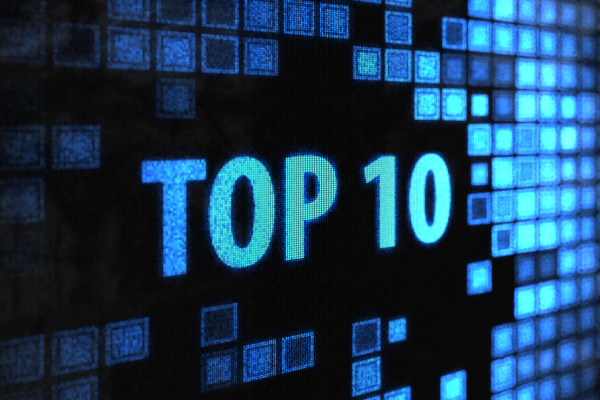If the COVID-19 years taught supply chain managers anything, it was to expect disruption. And while those on the ground deal with disruption almost on a daily basis in 2023, it is not the top item on the minds of supply chain practitioners heading into 2024.
In fact, it isn’t number two either. It is not even in the top five.
You will find a collection of technology-related topics in the top five. Digital supply chain has taken the top spot in the Association for Supply Chain Management’s (ASCM) annual supply chain trends list. Digital supply chain takes over the top spot from big data and analytics, which has dropped to number two on the list for the first time.
Artificial intelligence, supply chain investments (in systems and people), visibility, traceability, and location intelligence round out the top five.
In the sixth spot are disruption and risk management, dropping from number three a year ago, followed by agility and resilience (new to the list), cyber security, which fell two spots to eighth, green and circular supply chains, also down two spots, and geopolitical and deglobalization of supply chains, also new to the top 10, finishing the list.
“These will be the trends for the next three to five years,” Ulf Suerig, director of supply chain operations for Abbott, said during a panel discussion on the top 10 at ASCM’s Connect 2023 North America conference in Louisville, Kentucky, on Monday.
Suerig was joined on the panel by Amy Augustine, senior director of network supply chain for U.S. Cellular, and Jit Hinchman, founder of Supply Chain Advisor. The panel was moderated by ASCM’s Matthew Talbert, senior research management and committee liaison with the ASCM Sensing Subcommittee, a global group of practitioners charged each year with narrowing down the top supply chain trends into the annual top 10 list.
The list included six returning trends. Augustine noted that which trend is most important to your company “ties back to your strategy.”
The panelists agreed that while big data and analytics dropped from the top spot this year, it is only because supply chain practitioners have realized the importance of technology infrastructure.
“Analytics by itself will not solve our problems,” Suerig pointed out. “To be honest with ourselves, we need to get our data right and to do that, we need the right infrastructure.”
That infrastructure depends on the development of the digital supply chain. That happens, Hinchman said, “when you understand that big data and analytics is important [but] they won’t give you the insights by themselves.”
Robotics and volatility fell off the list this year, but Augustine said that it is more a result of changing times and volatility just isn’t as big of an issue as it was a few years ago.
“We’re practitioners in our day jobs, so when [the committee members] vote, we consider what’s impacting our jobs,” she said, before adding that “volatility wasn’t as big of an issue” this year.
Toward the end of the discussion, Augustine circled back to the risk and volatility concerns.
“I think there are some companies that are letting their guard down around supply chains,” she said.
Suerig agreed, suggesting that “at this moment in times, there is a perception that we are over the problems.”
The panel touched on several other trends in the top 10 list, including the two-spot drop on the list for green and circular supply chains.
Augustine pointed out that it remains tough to get executives to make investments in these areas when they don’t contribute as much to the bottom line immediately. That approach, she said, is pushing governments to do more regulating of industry and forcing companies to react.
“I’d rather see the other way where we are driving the change, driving the bus, rather than the government,” Augustine said.
Hinchman addressed the circular supply chain, suggesting that the green supply chain is one where companies behave in a certain way because they believe in a cause, whereas the circular supply chain is more complicated.
“The circular supply chain requires an entire ecosystem,” she said.
The panelists also debated risk and resilience issues and how to balance those and the impacts that is having on the nearshoring/reshoring debate.
“It takes some time,” Hinchman said. “In order to change from one country, one region, to another, it takes years. Some companies are stilling to do this.”
Augustine said a lot of work still needs to be done in this area, as some companies are moving manufacturing from China to India, for instance, but they are still reliant on China for the raw materials. Suerig suggested companies look at this and address changes “where it makes sense.”
SC
MR


Latest Supply Chain News
- Retail sales see gains in October, reports Commerce and NRF
- Balancing green and speed: Home delivery insights from the pandemic era
- AdventHealth named top healthcare supply chain by Gartner
- Geopolitical readiness in supply chains: Strategic challenges for leaders
- Unlocking retention: The role employee engagement plays
- More News
Latest Podcast

 Explore
Explore
Topics
Business Management News
- Retail sales see gains in October, reports Commerce and NRF
- Balancing green and speed: Home delivery insights from the pandemic era
- AdventHealth named top healthcare supply chain by Gartner
- Unlocking retention: The role employee engagement plays
- Can supply chain managers embrace an entrepreneurial mindset?
- Challenges to ESG reporting
- More Business Management
Latest Business Management Resources

Subscribe

Supply Chain Management Review delivers the best industry content.

Editors’ Picks




